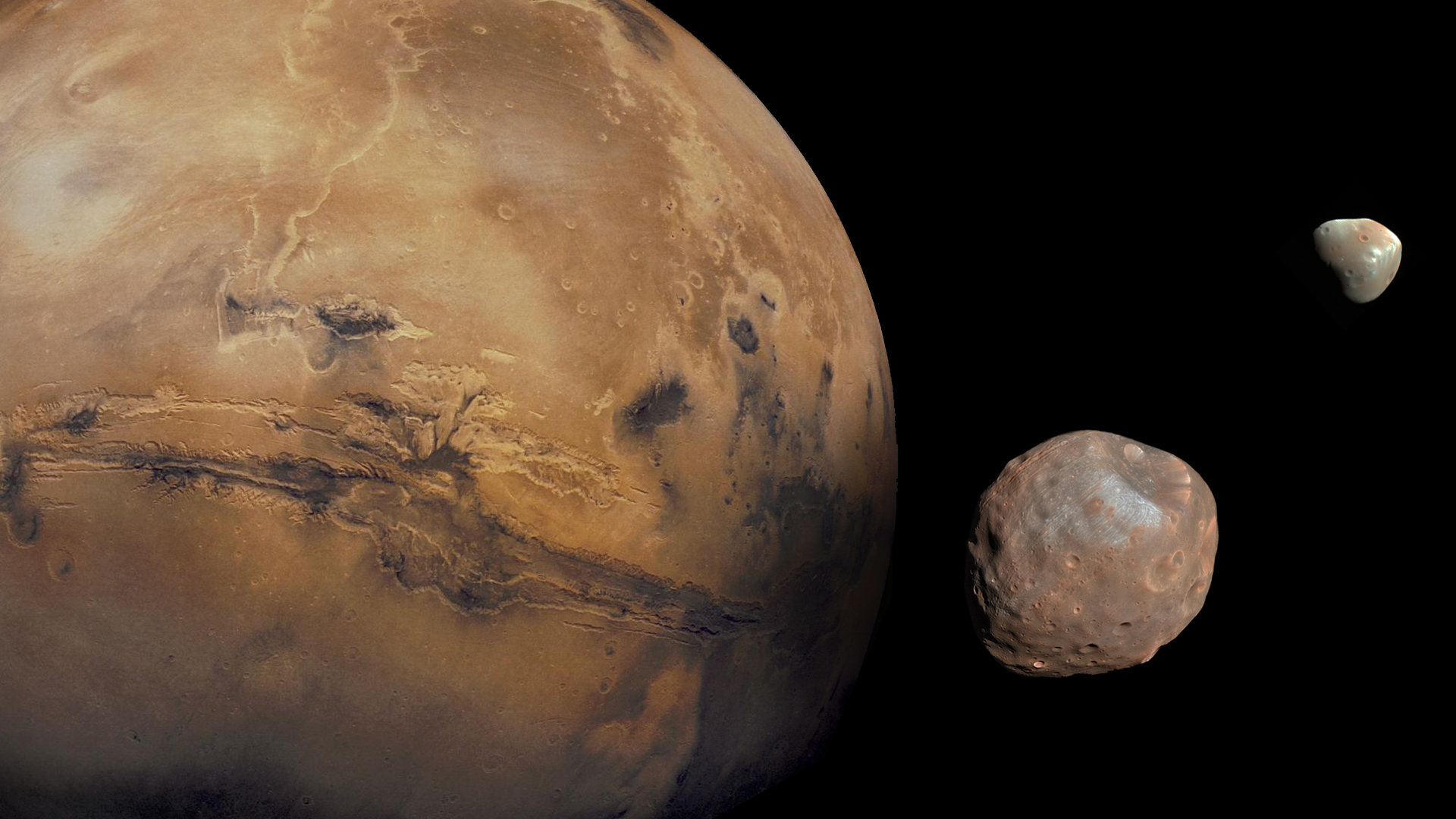A Huge Asteroid Hitting Mars 4 Billion Years Ago May Have Shaped the Red Planet

The peculiar geological features on Mars have long puzzled astronomers and planetary scientists. The north of the planet is mostly smooth lowlands while the south is higher and full of craters, and the Red Planet’s interior has a striking abundance of rare metals.
Researchers have proposed various explanations for these elements, positing that they may have been shaped by such forces as ancient oceans, extraterrestrial plate tectonics, or a massive asteroid strike. The latter idea, known as the "single impact hypothesis," has picked up steam of late, and was just given a shot in the arm by a new paper that argues that the sculpting of Mars and its two small moons was largely determined by a huge impact early in the solar system's history.
In this scenario, a celestial body that was roughly the size of Ceres, a dwarf planet in the asteroid belt, collided with the Red Planet and tore away a part of its northern hemisphere, leaving behind large deposits of metallic elements. Additionally, debris from the asteroid circled the planet and eventually coalesced into Phobos and Deimos, the two tiny moons that orbit Mars — at least for now. (Scientists estimate that Phobos will either break up or slam into Mars in a few million years.)
RELATED: Mars May Have Been Born in the Asteroid Belt
"We showed in this paper — that from dynamics and from geochemistry — that we could explain these three unique features of Mars," said Stephen Mojzsis, a professor in the University of Colorado Boulder's department of geological sciences and a co-author of the paper, in a statement. "This solution is elegant, in the sense that it solves three interesting and outstanding problems about how Mars came to be."
The research, which Mojzsis produced in collaboration with Ramon Brasser, an astronomer at the Earth-Life Science Institute at the Tokyo Institute of Technology in Japan, was recently published in Geophysical Research Letters. It looked at Martian meteorite samples that landed on Earth. These samples had more rare metals (like iridium, osmium or platinum) than expected, hinting that Mars received a lot of impacts from small, rocky asteroids that carried these elements with them.
The scientists estimated that these rare metals account for about 0.8% of the mass of Mars.
Get the Space.com Newsletter
Breaking space news, the latest updates on rocket launches, skywatching events and more!
RELATED: NASA's Curiosity Rover Traces Ancient Environmental Changes on Mars
They then ran simulations with asteroids of various sizes to determine what size would best fit the Martian geology. The answer was a huge asteroid about 745 miles across (1,200 kilometers) — nearly the length of the state of California. The simulations suggest this behemoth slammed into Mars about 4.43 billion years ago, just 700 million years after the solar system was formed. Several smaller impacts occurred in the eons that followed.
The researchers theorize that after the big impact took place, there were distinct areas of asteroid material and Red Planet rock on the surface. Over time, however, erosion, wind, and other processes on the surface swept the two reservoirs together in a mixture.
Mojzsis and Brasser next plan to use UC Boulder's Martian meteorite archives to see how the composition of these meteorites differs or remains the same, depending on how old the meteorites are.
Originally published on Seeker.
Join our Space Forums to keep talking space on the latest missions, night sky and more! And if you have a news tip, correction or comment, let us know at: community@space.com.

Elizabeth Howell (she/her), Ph.D., was a staff writer in the spaceflight channel between 2022 and 2024 specializing in Canadian space news. She was contributing writer for Space.com for 10 years from 2012 to 2024. Elizabeth's reporting includes multiple exclusives with the White House, leading world coverage about a lost-and-found space tomato on the International Space Station, witnessing five human spaceflight launches on two continents, flying parabolic, working inside a spacesuit, and participating in a simulated Mars mission. Her latest book, "Why Am I Taller?" (ECW Press, 2022) is co-written with astronaut Dave Williams.









